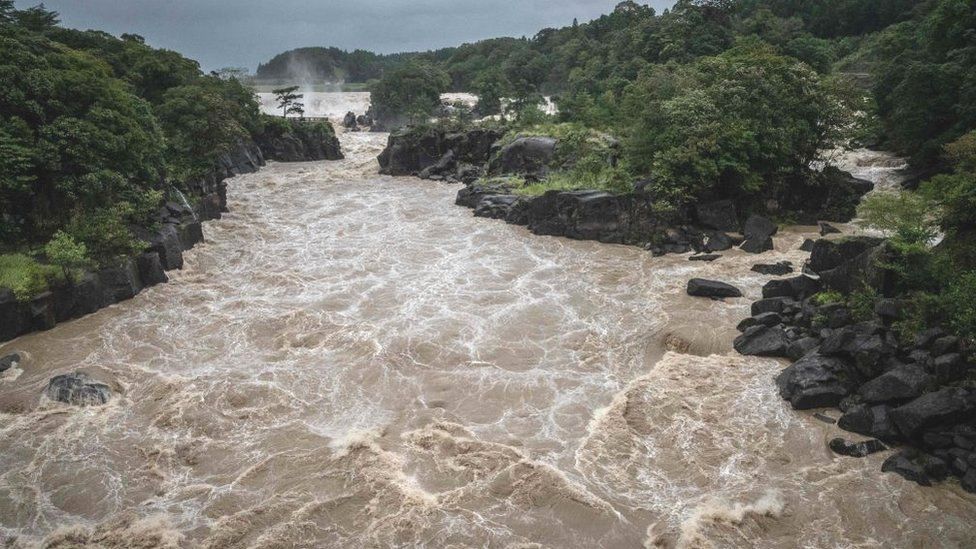



Workers survey the site of a landslide caused by Typhoon Nanmadol in Mimata, Miyazaki prefecture
Typhoon Nanmadol killed at least four people and injured more than 100 others after making landfall on the southern island of Kyushu on Sunday morning.
By Tuesday, 140,000 homes were still without electricity.
The storm has now been downgraded to a cyclone, after moving across much of the country and heading out to sea.
State broadcaster NHK said one man was killed when his car was submerged in flooding, and another died after being buried in a landslide. Two more people were found "without vital signs", a term often used to refer to a death before it is certified by a coroner. At least 114 people have been injured, 14 of them seriously.
The super typhoon brought gusts of up to 234km/h (145mph), destroying homes, and disrupting transport and businesses. It is equivalent to a category four or five hurricane.
 I
I
Passengers stranded at Hakata station as train services were suspended when Typhoon Nanmadol approached Kyushu

An aerial view of houses submerged by flooding in Kunitomi on the island of Kyushu
The capital, Tokyo, experienced heavy rain, with the Tozai underground line suspended because of flooding. Bullet train services, ferries and hundreds of flights have been cancelled; shops and businesses have shut. Local video footage showed roofs ripped off buildings and billboards toppled over.
Prime Minister Fumio Kishida delayed a visit to New York, where he was due to give speech at the UN General Assembly, until Tuesday, to monitor the storm's impact.

Japanese Self-Defence Force soldiers conducting search and rescue operation at sites of landslides

Raging waters flow along the Sendai River in Isa in Kagoshima prefecture
Scientists have predicted an active hurricane season this year, influenced by a natural phenomenon known as La Niña.
Warmer sea surface temperatures in the Atlantic and Caribbean as a result of climate change may also impact the frequency and intensity of hurricanes.
-- Courtesy of BBC News